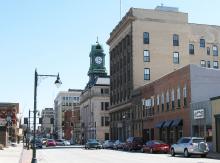Join Us Thursday, March 3rd at 5pm ET, To Talk Definition of Broadband, MDUs, Redlining and More - Episode 35 of the Connect This! Show
It’s been one long year since Chris took a bet with Travis over the FCC updating the definition of broadband, and this week we’ll find out who won (not looking good, Chris). In this episode of the Connect This! Show, co-hosts Christopher and Travis Carter (USI Fiber) are joined by regular guests Kim McKinley (UTOPIA Fiber) and Doug Dawson (CCG Consulting) to talk about current events in broadband.
The panel will talk about the FCC definition of broadband, MDUs, other recent news and will continue their conversation about redlining and digital discrimination.
Subscribe to the show using this feed on YouTube Live or here on Facebook Live, or visit ConnectThisShow.com.
Email us broadband@muninetworks.org with feedback and ideas for the show.
Watch here on YouTube Live, here on Facebook live, or below.



